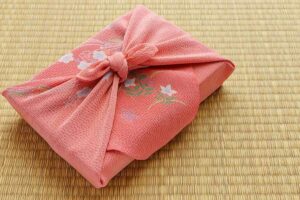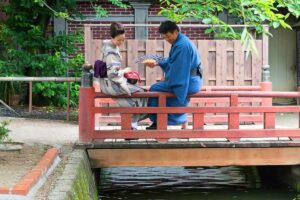In keeping with the exemplary culture of the Japanese people, flowers symbolize multiple things to them.
The particular Japanese language of flowers is known as Hanakotoba. Flower lovers use Ikebana, the intricate flower arrangement skill, to prepare meaningful bouquets for any occasion.
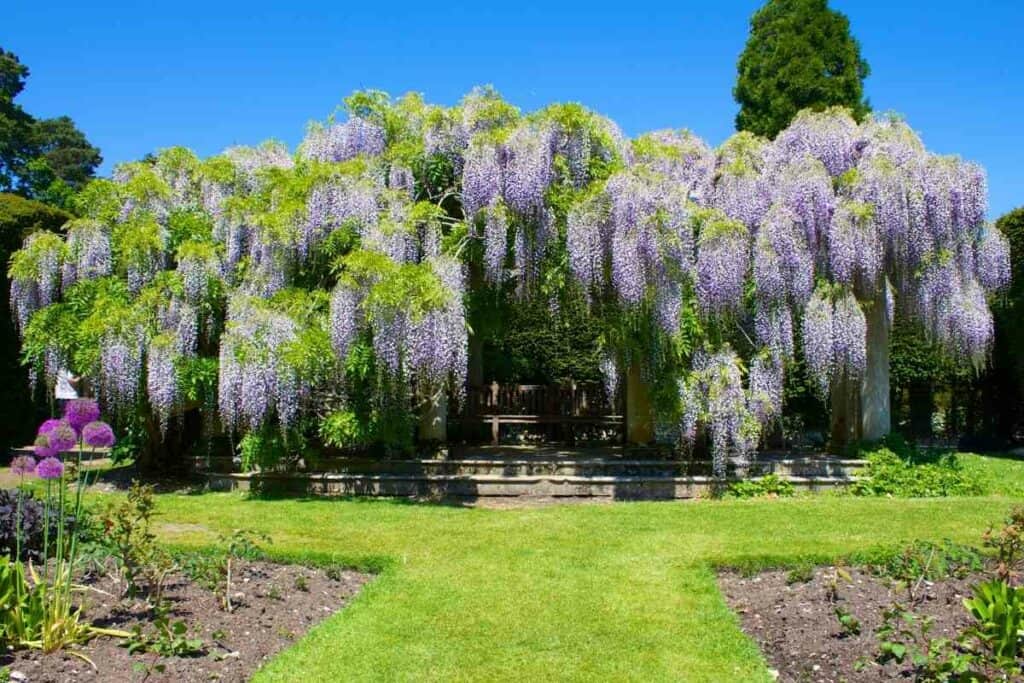
The art of Hanakotoba is fast disappearing with modernization and cultural differences in Japan.
However, it is still common to find the practice in traditional settings and by some people who uphold it. The language of flowers is profound as it expresses what one cannot say in words.
Whenever you are in Japan, picking a bouquet to display in your home or office, send to a loved one or celebrate an occasion is different.
It’s crucial to ensure your choice comes from the best quality of the most popular Japanese flowers. Every petal in the arrangement conveys its message, creating personal symbolism.
Table of Contents
The Language Of Flowers’s History In Japan
The cultural tradition of Hanakotoba began in the mid-1800s to early 1900s during the Meiji era.
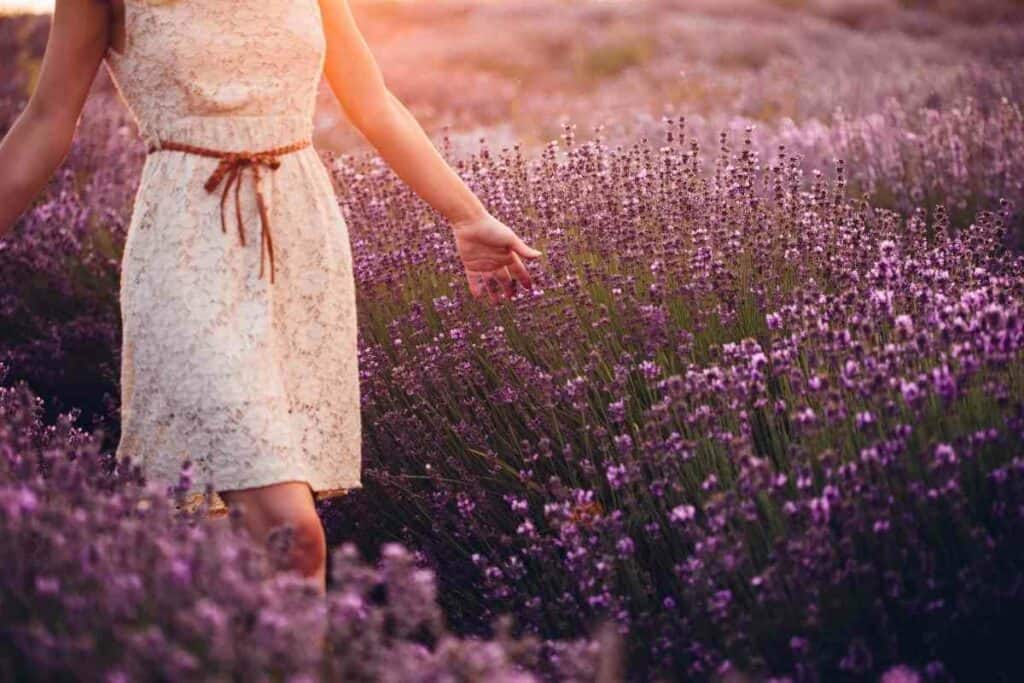
It was introduced to the Japanese by the Chinese to keep up with the western people of the Victorian era.
The Japanese quickly embraced the flowers and incorporated them into their culture, religion, and beliefs.
Ikebana – The art of flower arrangement, began before Hanakotoba. It uses the thoughtful organization of flowers, rocks, branches, and even water to symbolize various thoughts and capture emotions.
The setting is familiar in home and office decoration, religious altars, and celebration and funeral setups.
Although traditional Ikebana and Hanakotoba go hand in hand, modern displays also express feelings and words in silent detail.
The Most Popular Japanese Flowers And Their Meanings
1. Ajisai – Hydrangeas
Hydrangeas originate from Japan, and these beautiful flowers mean pride.
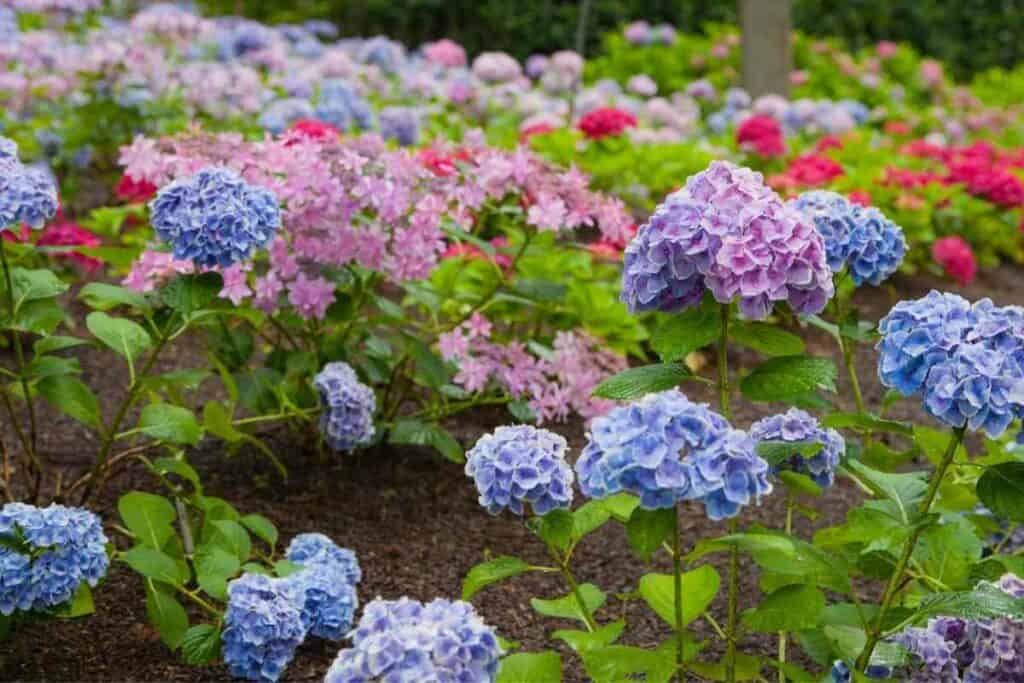
They bloom in late June during the rainy season and grow in large numbers across the country.
Their leaves also brew a sweet type of tea, popular in Japan.
Visitors to Japan can glimpse various types of hydrangeas at Asukayama Park or Hase Temple in Kamakura.
Booking.com2. Roses
Similar to other parts of the world, Roses in Japan come in varying colors and have unique meanings regarding love.
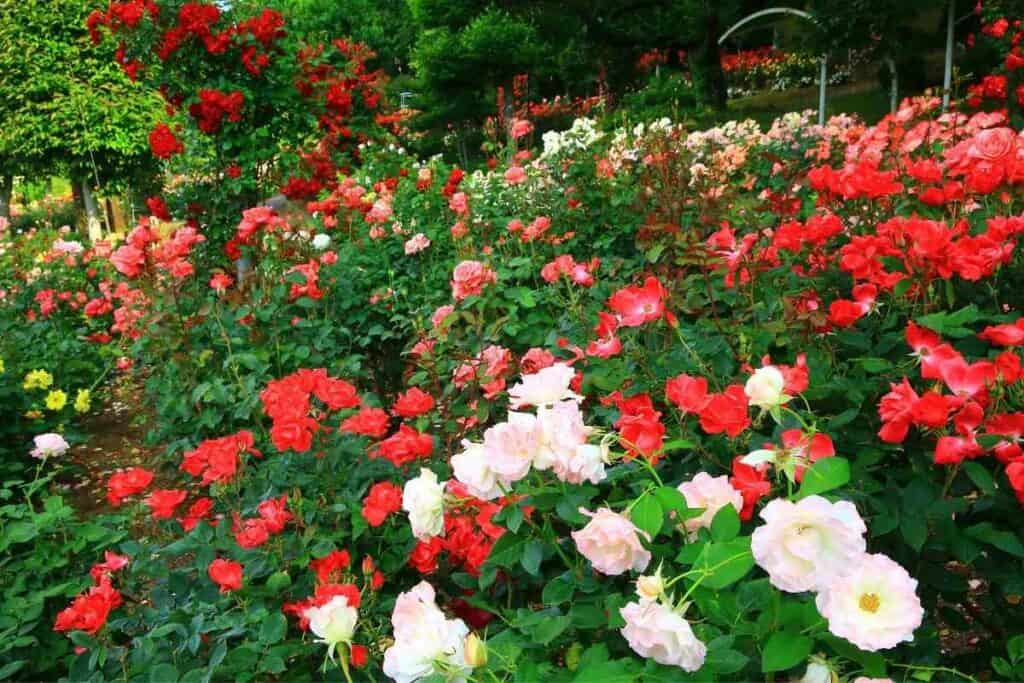
They are:
- Bara refers to white roses which convey purity, quiet, and devotion.
- Benibara is a red rose that means in love.
- Kiiroibara is a yellow rose and shows jealousy.
- Kiiroibara is also a name for the pink rose, which portrays happiness, faith, and trust.
Plant and flower gardens all over Japan grow over 500 varieties of European rose flowers.
3. Churippu – Tulips
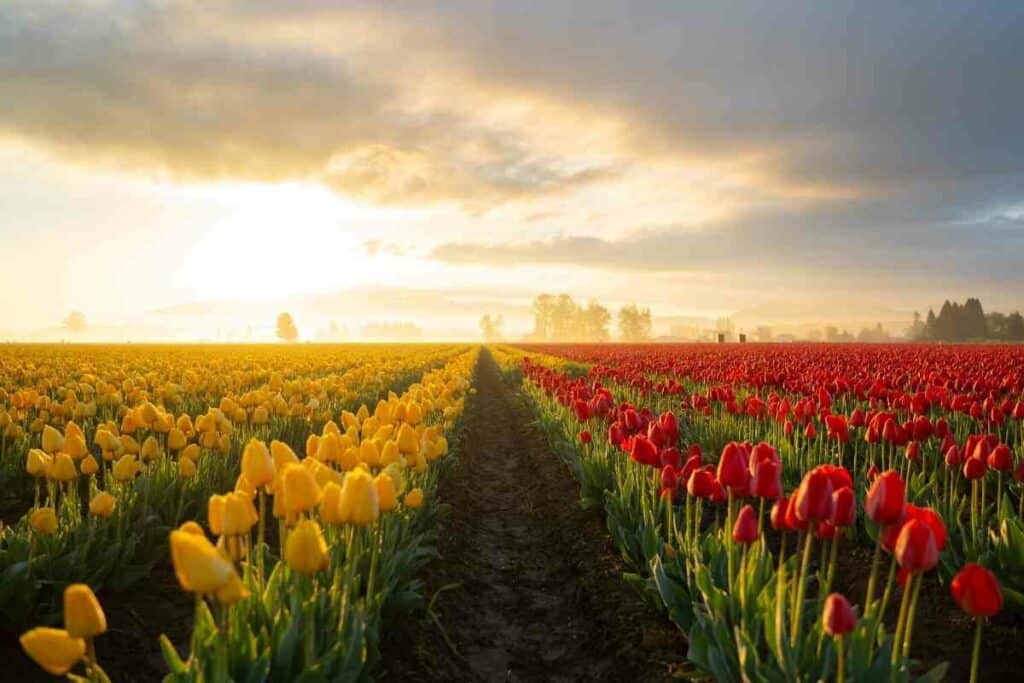
Tulips in Japan are either red or yellow and are gifted depending on the occasion:
- Red tulips in Japan mean stardom, confidence, and generosity. In Japan, you give someone red tulips when wishing them success and fame.
- Yellow tulips mean love that is usually one-sided. You give yellow tulips to show understanding that the receiving party does not feel the same way or vice versa.
Tonami Tulip Park is famous due to their vast display of tulips annually from late April to early May.
4. Fuji – Wisterias
Wisterias in Japan grow in large vines that produce many purple-colored flowers.
They mean acceptance and commitment.
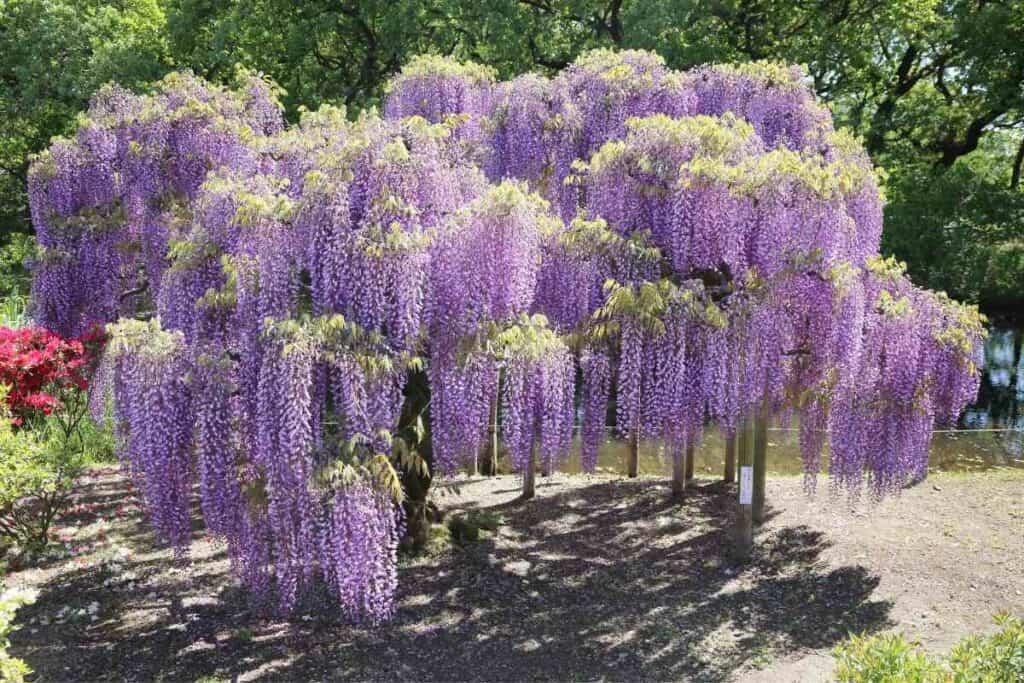
You will find these flowers printed on kimonos and traditional hair decorations to represent nobility. In older times, only the wealthy could afford to wear purple garments.
The Ashikaga Flower Park has a fantastic display of the bluish-purple wisterias that bloom yearly towards the end of April and early May.
Read next – 14 Best Wisteria Gardens in Japan
5. Hanashobu – Japanese Water Iris
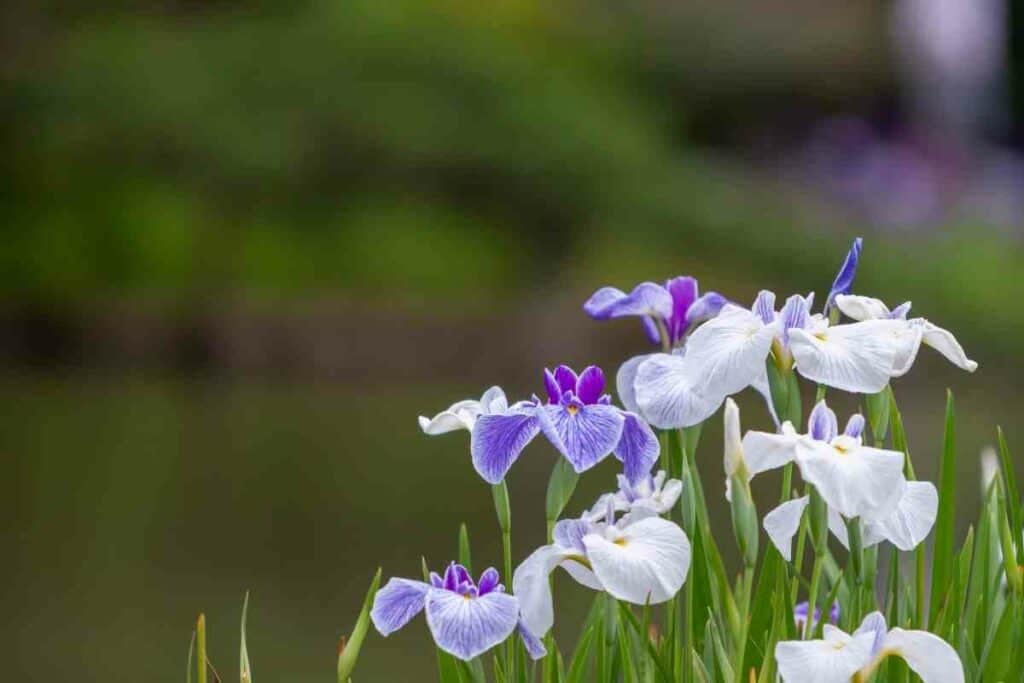
Also known as Iris Ensata, this flower blooms in June and represents a gentle heart or happy news.
One can offer someone Japanese water irises or use them as displays to portray elegance.
6. Himawari – Sunflowers
The large and brightly colored sunflowers are honored every year in Okinawa, Japan, during the sunflower festival.
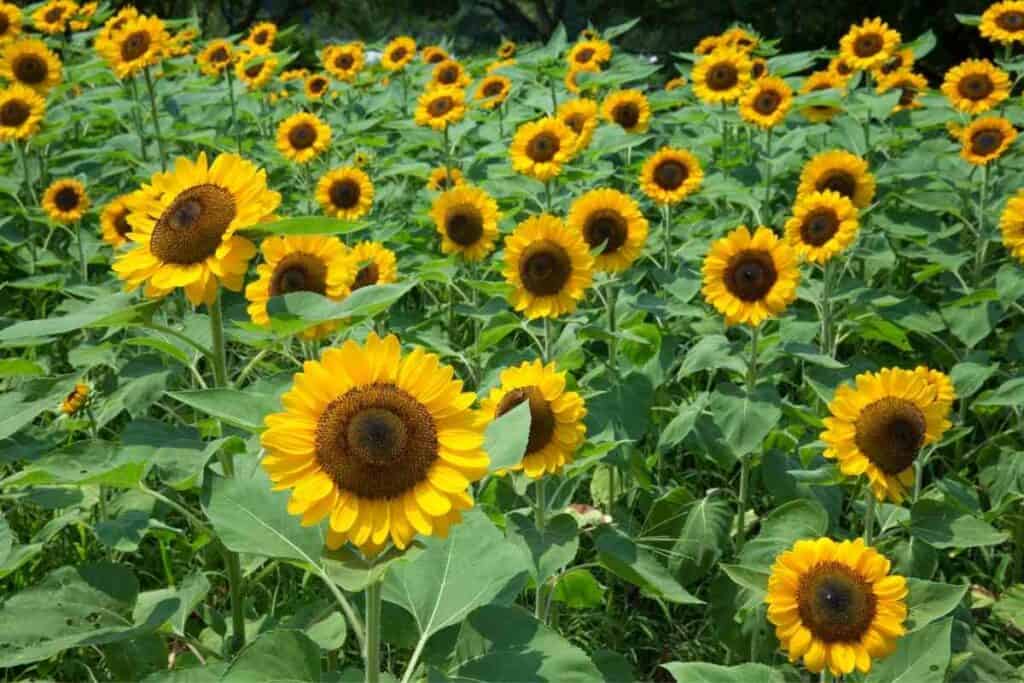
They mean passion, admiration, and radiant love. You give someone sunflowers to represent recovery and hope.
Japanese sunflowers bloom in July and August yearly, and the Akeno Sunflower Field offers a breathtaking view of millions of them.
7. Kan Botan – Winter Peonies
Winter peonies get the name in Japan as they bloom at the start of winter when snow is expected.
Also Read 📖
They symbolize bravery, prosperity, and fame.
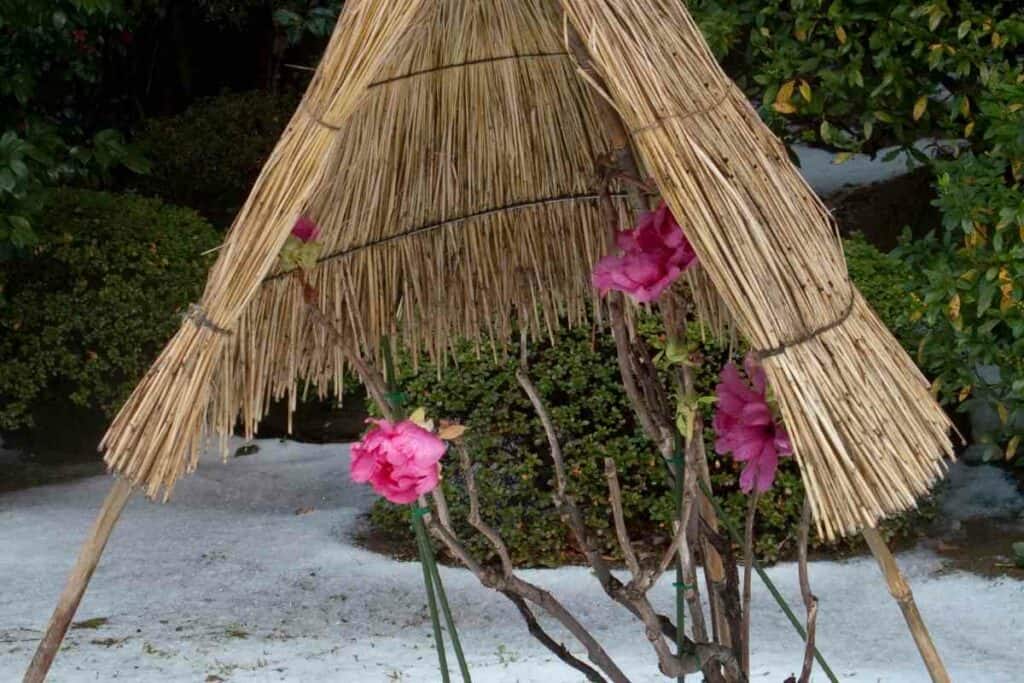
In Japan – Peonies grow in various large varieties, making them well-sought after. To see them in full bloom, visit the Toshogu Shrine in Ueno Station when in Tokyo during winter.
8. Kaneshon – Carnations
Red carnations are standard in Japan, meaning fascinating love or affection.
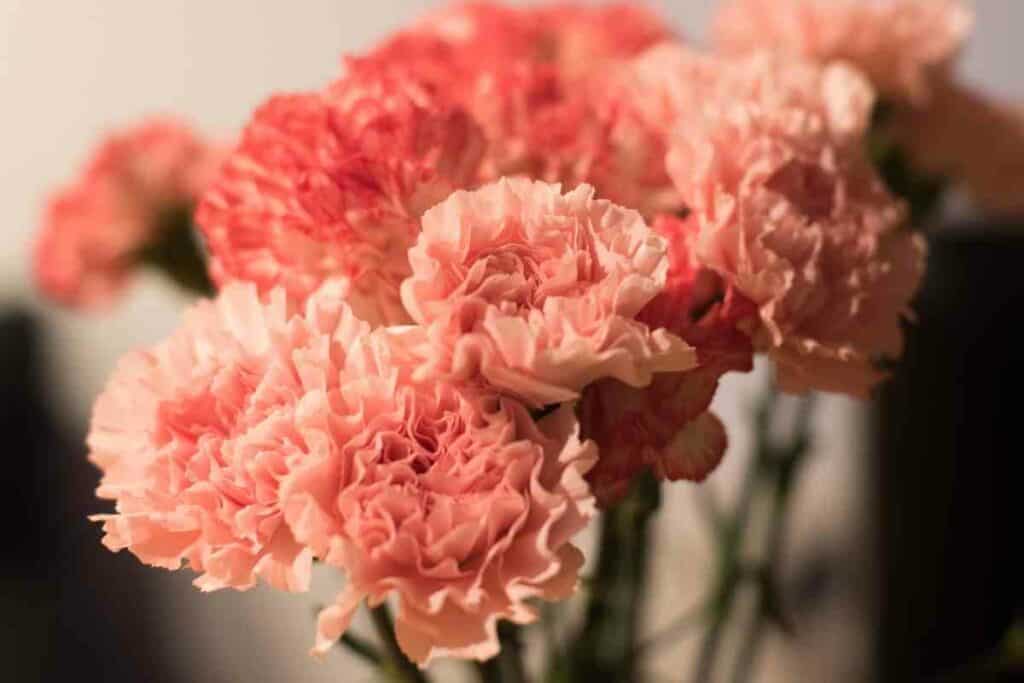
They make perfect gifts for Mother’s Day and to give to spouses during Valentine’s Day.
In traditional Japan, both genders can receive carnations from their loved ones.
However, the yellow carnations symbolize rejection and may be given to imply friendship, away from romantic affection.
9. Kiku or Shiragiku – Chrysanthemums
Nine is a lucky number in Japan, the annual September 9th National Chrysanthemums Day.
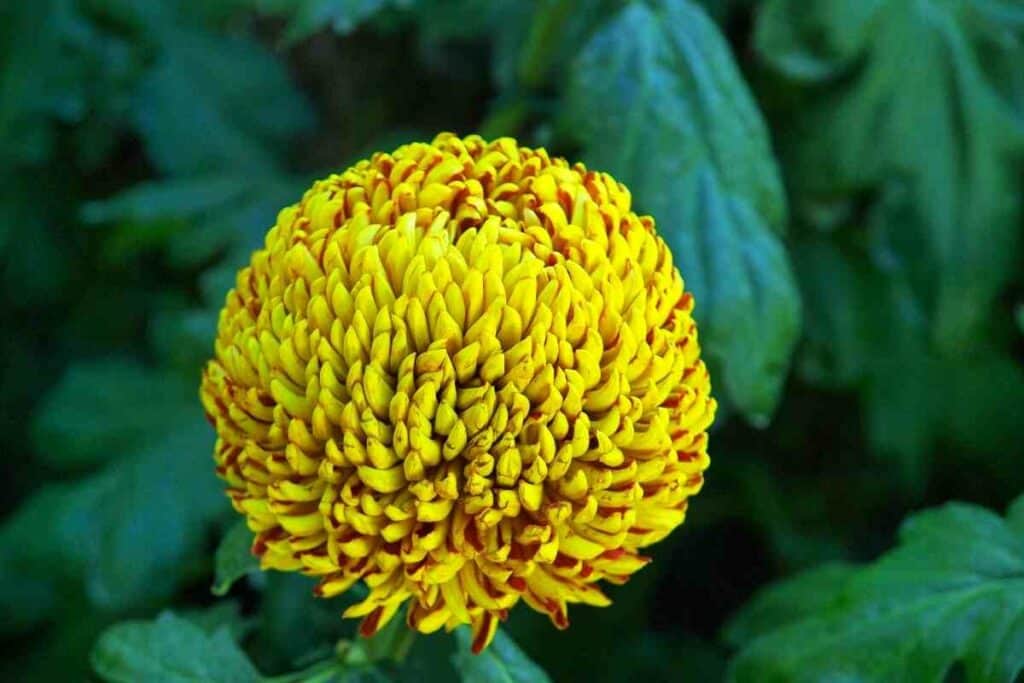
Also known as the Happiness Festival, the day is a celebration of the Japanese rich culture.
Chrysanthemums bloom in two different colors with different meanings:
- Kiku or Kigiku are yellow and mean royalty in keeping with the Hanakotoba tradition.
- Shiragiku is a white chrysanthemum that symbolizes honesty.
The flower is so beautiful that it is a common Tattoo among the Japanese.
It is also the official emblem of the Imperial family, appears on the front of the Japanese passport, and grows in most shrines around Japan.
10. Kikyo – Japanese Bell or Balloon Flowers
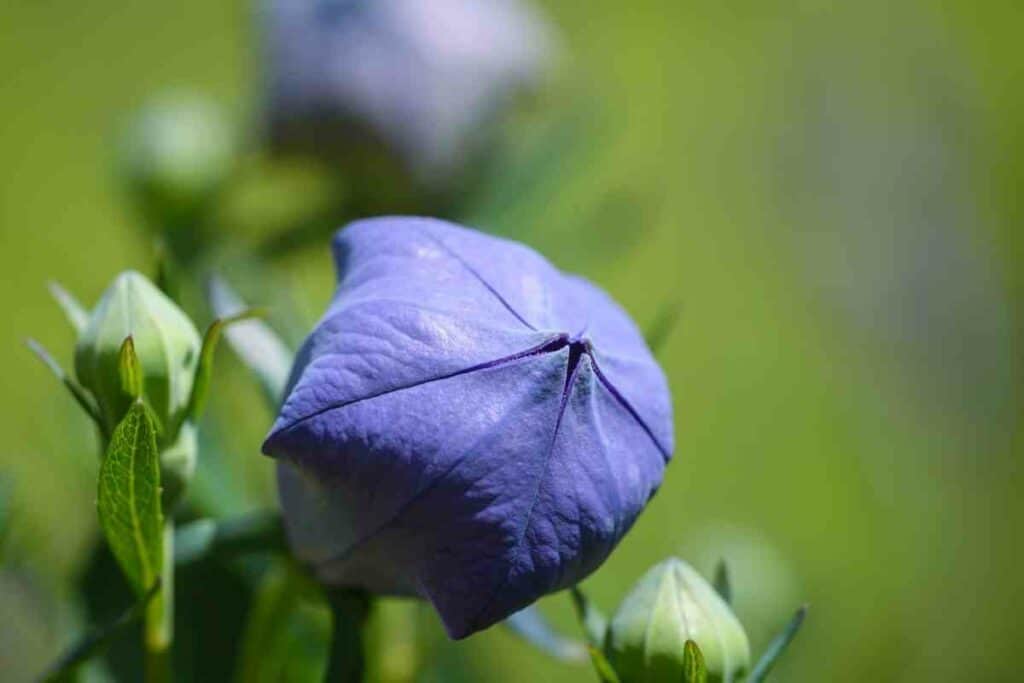
Bell or balloon flowers bloom in autumn at the end of August and are some of the most popular Japanese flowers.
They portray honest and endless love due to their lovely purple-blue color.
11. Kinmokusei – Osmanthus fragrans
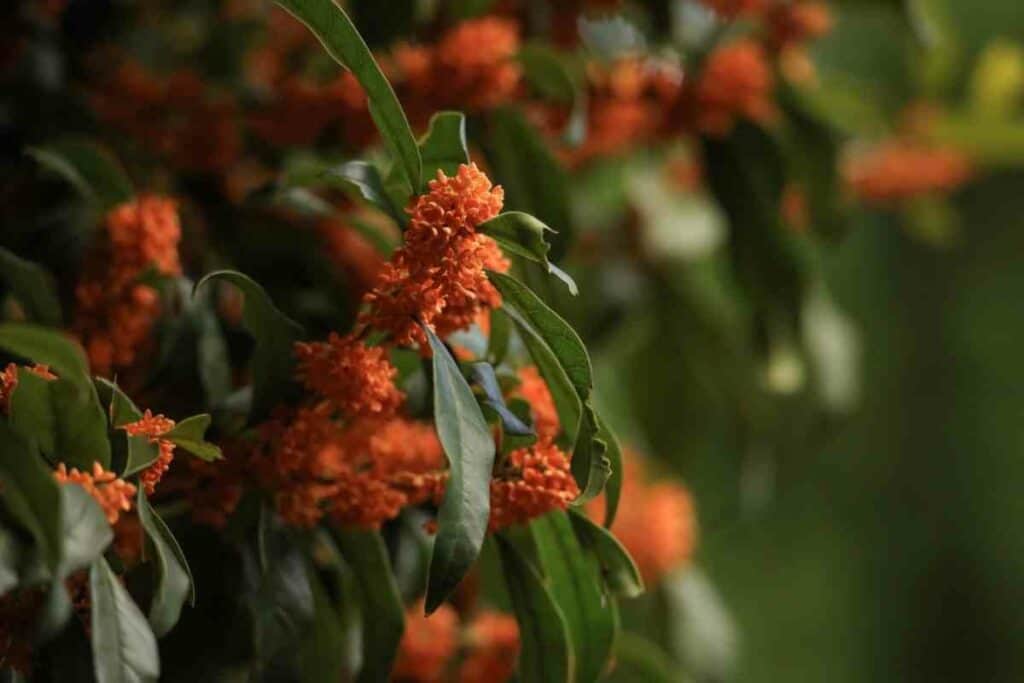
These orange-yellow flowers bloom out of a Japanese shrub that originates from China.
It now grows in Japan after its discovery during the Edo era. It symbolizes sincerity and integrity.
12. Kosumosu – Cosmos
Cosmos flowers are similar to cherry blossoms hence the almost identical name.
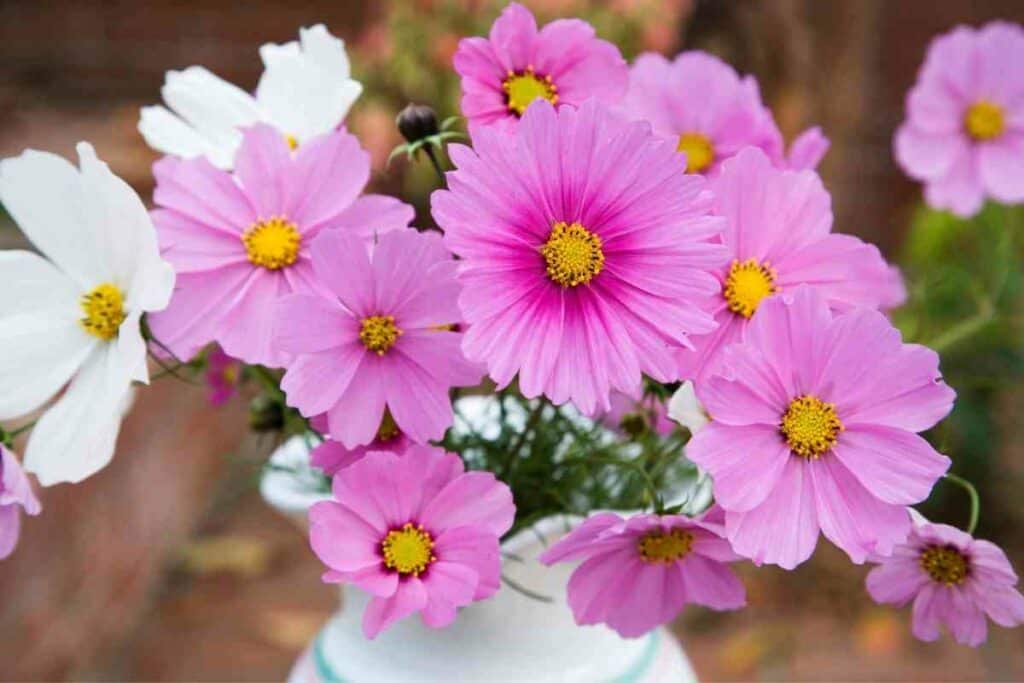
Cosmos flowers mean clean heart or love. Cosmos appears in multiple colors, and one can visit Showa Memorial Park, among other locations in Japan, to see them.
Here they bloom at the beginning of autumn, early August.
13. Lillies
Japanese lilies bloom in different colors and types with different names and meanings.
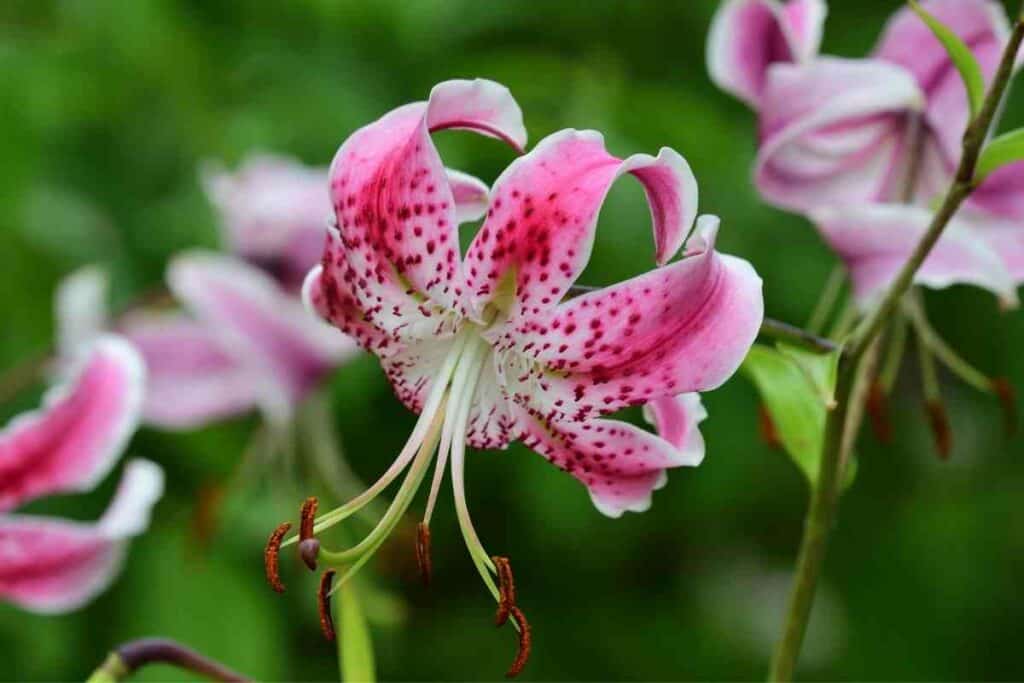
Below are some of the popular varieties:
- Shirayuri: White Lillies that represent purity and innocence.
- Sayuri: Orange Lillies that show hate and symbolize vengeance.
- Oniyuri: Tiger Lillies that portray wealth.
- The Higanbana: The red spider Lilly means separation or a sad memory. They are commonly used to represent death and are planted on burial grounds to keep away animals.
- Manjushage spider: These Lillies are in multiple colors and are displayed at the Kinchakuda spider lily festival, Saitama, Japan.
14. Furijia – Freesia Flowers
Freesias symbolize young immature or childish behavior.
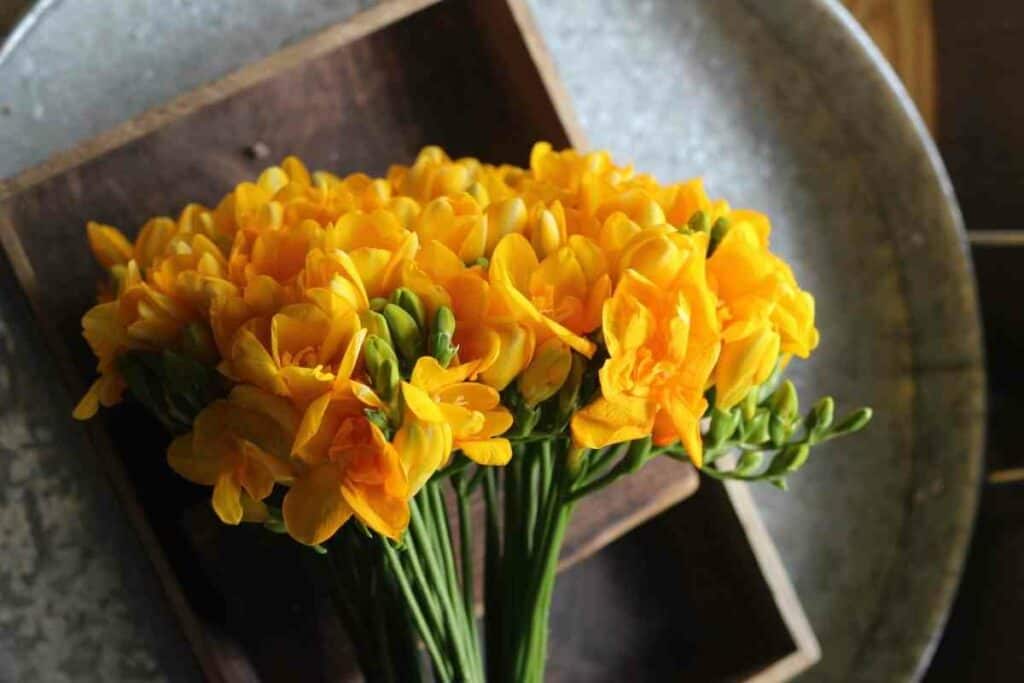
Despite their sweet smell, giving them to someone in Japan may be offensive.
They represent the start of the Japanese spring, culminating in a festival to celebrate them.
The Festival – Known as the Hachijojima Freesia Festival, takes place between the last week of March and early April.
15. Rabenda – Lavender
Lavender fields are vast on the Hokkaido Island of Japan, where they bloom between July and August.
The lavender flower symbolizes faithfulness.
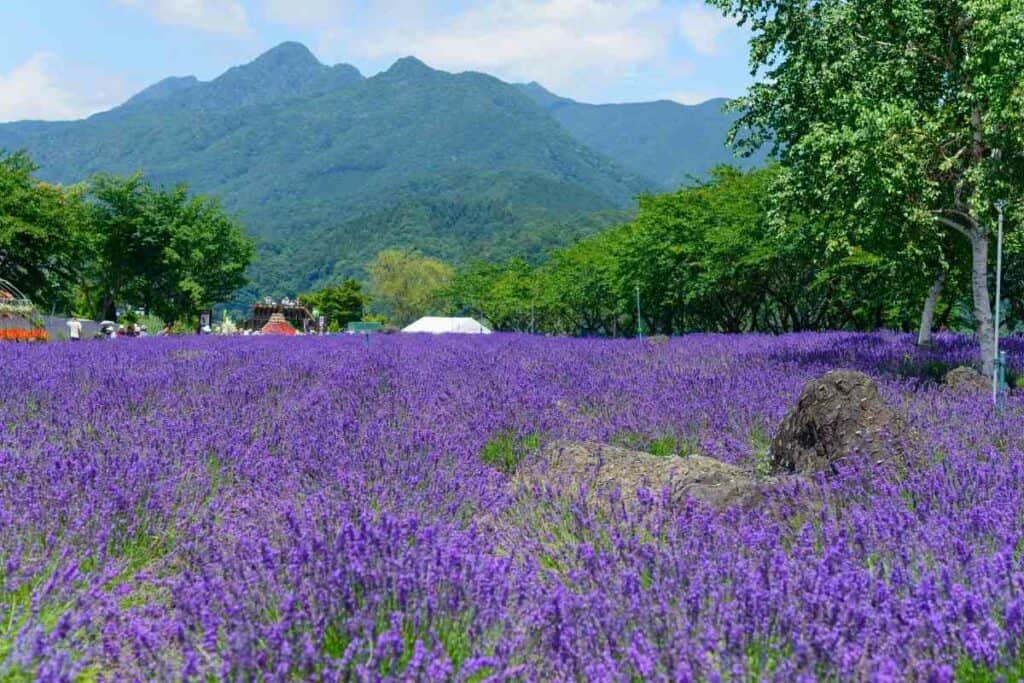
It is ideal for giving to someone if you want to convey trust or ask for their commitment.
The most extensive lavender meadow in Hokkaido is Farm Tomita, which is open to visitors.
16. Sakura – Cherry Blossoms
Cherry Blossoms are the essence of Japanese flower culture. They convey a message of kindness or gentle nature.
The life cycle of cherry blossoms is symbolic as they grow throughout the year in different stages.
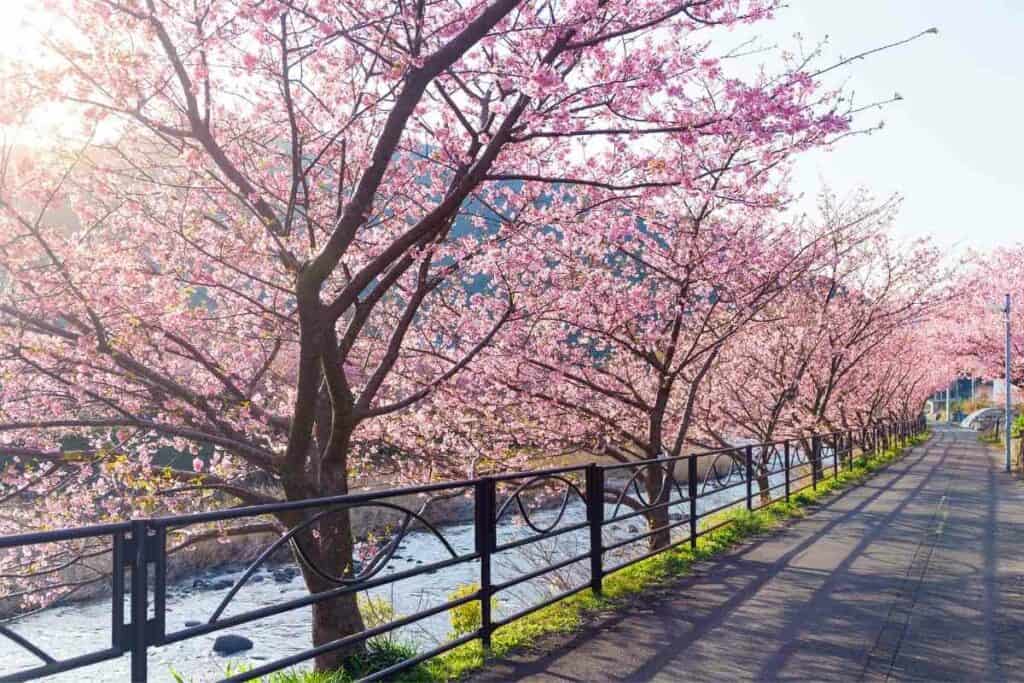
These stages represent a human life through birth, death, and rebirth in various life seasons.
Additionally, cherry blossoms symbolize beauty and violence in equal measure.
During the world war, pilots’ families hung on planes to represent the life of warriors.
Visit the Yoyogi Park in Tokyo in late March every year to see these beautiful flowers in full bloom.
17. Suisen – Daffodils
Daffodils are bright yellow flowers that convey respect in Japan.
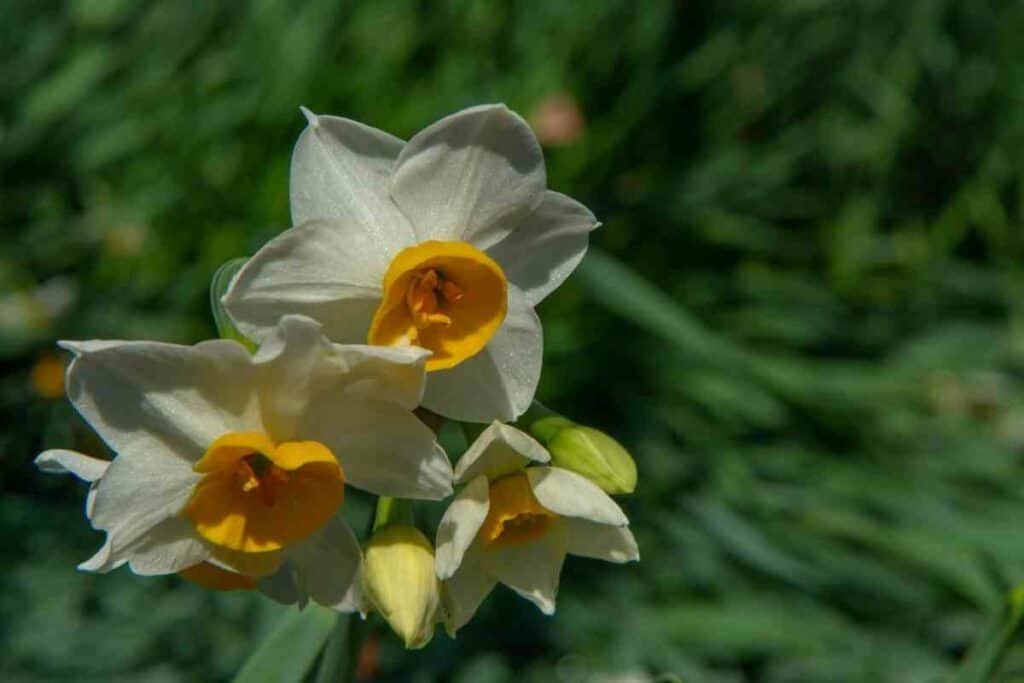
They are excellent to gift older people in our lives and those we admire in authority.
If you’d love to see these flowers, head to Jogashima Park. These winter daffodils are grown in hundreds of thousands here.
18. Sumire – Violets
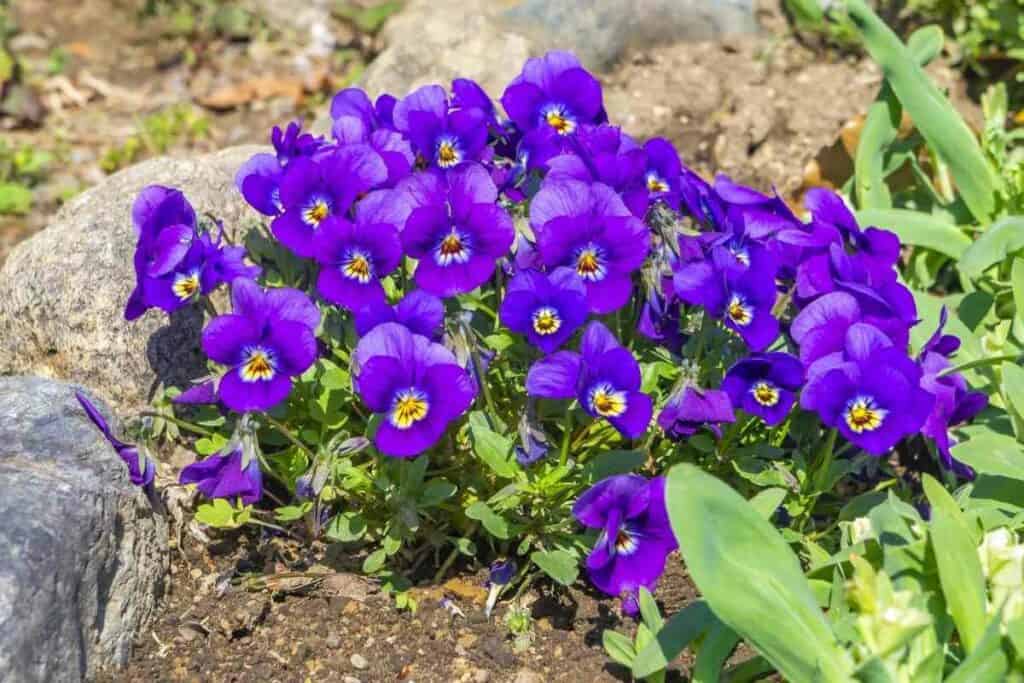
Violets grow around most gardens and walls in Japan.
They mean honesty and are an excellent gift to show sincerity and appreciation for someone.
19. Tsubaki – Camellias
Camellia flowers bloom in Japan towards the end of winter and early spring in different colors.
They symbolize a new year and are common in celebrating a fresh start.
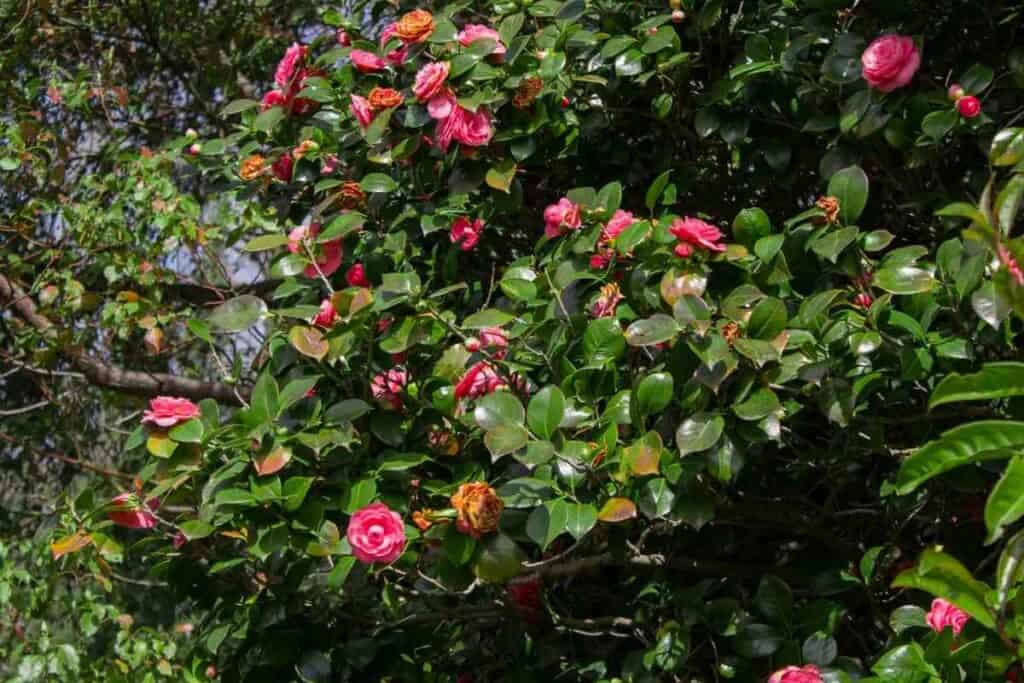
Their meaning depends on the color and state of the petals.
For instance:
- Red petals express a feeling of being in love or a noble death by warriors.
- Pale pink or yellow petals express longing and are perfect for showing that you miss someone.
- White petal camellias show that one is waiting for someone or something.
Camellias fall off the stalk when they wilt, making them wrong to gift someone who is ill or injured.
The wilting symbolizes death and may convey the wrong message to a sick person.
20. Tenjikubaton – Dahlias
Dahlias are pretty flowers that represent good taste.
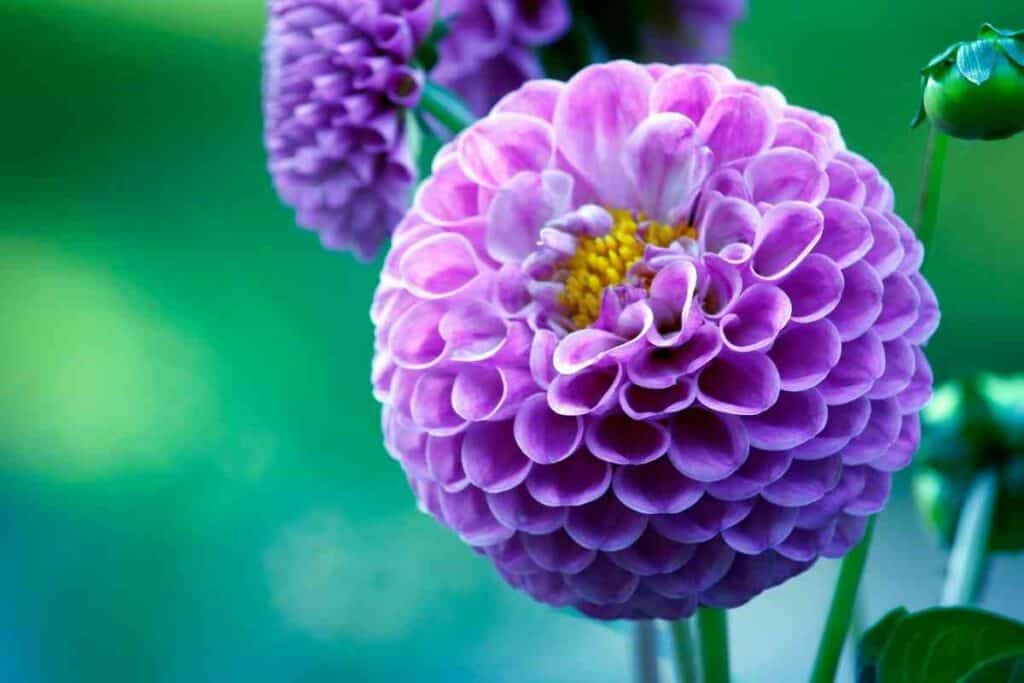
They are perfect if you want to compliment a stylish person or special occasion.
A few thoughtful restaurant owners and interior decorators love using them as table displays and housewarming gifts.
21. Ume – Plum Blossoms
Japanese plum trees produce plum blossom flowers towards the end of spring.
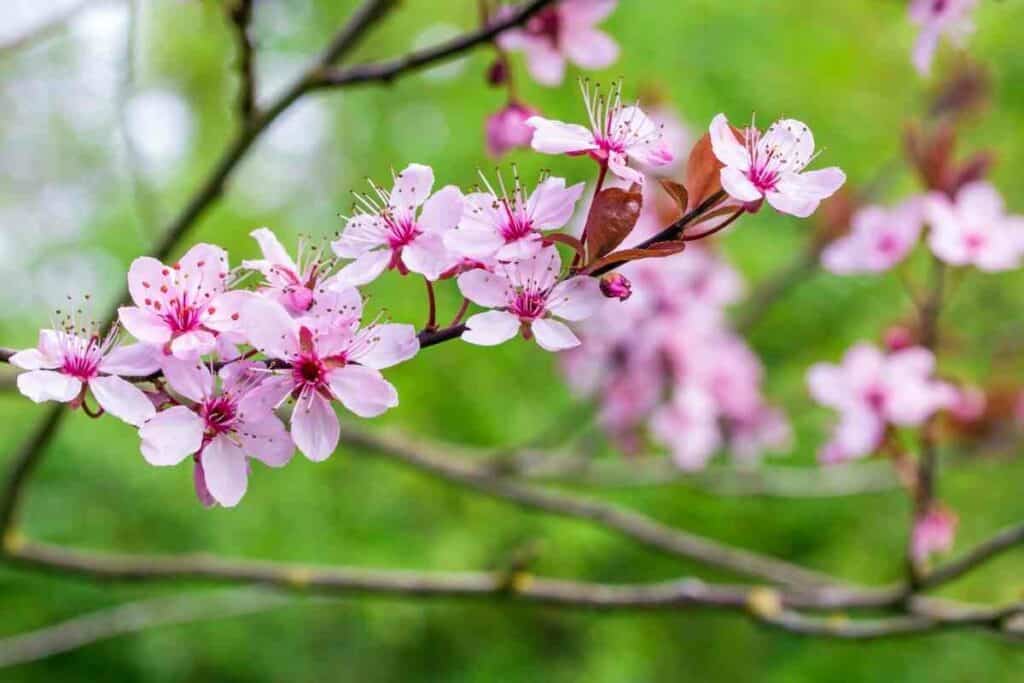
They symbolize hope as they grow when the weather is harsh and unreliable.
Plum blossoms mean elegance and dependability.
If you are in Japan, these blooms grow plenty and can be seen at Atami Plum Garden or Yushima Tenjin Shrine in Tokyo.
People also ask
What is Japan’s national flower?
Cherry blossoms are the national flowers of Japan. An annual cherry-bloom festival runs for a week in Uyeno Park, Tokyo City.
What flower symbolizes friendship in Japan?
Carnations, cherry blossoms, and sunflowers are given to people in Japan as a symbol of love and friendship.
What is the meaning of a black rose in Japan?
Like other parts of the world, black roses symbolize death or dark times in Japan.
Are there blue roses in Japan, and what do they mean?
Yes. However, blue roses in Japan are synthetically modified to have the color on the petals. A blue rose symbolizes achieving something otherwise impossible.
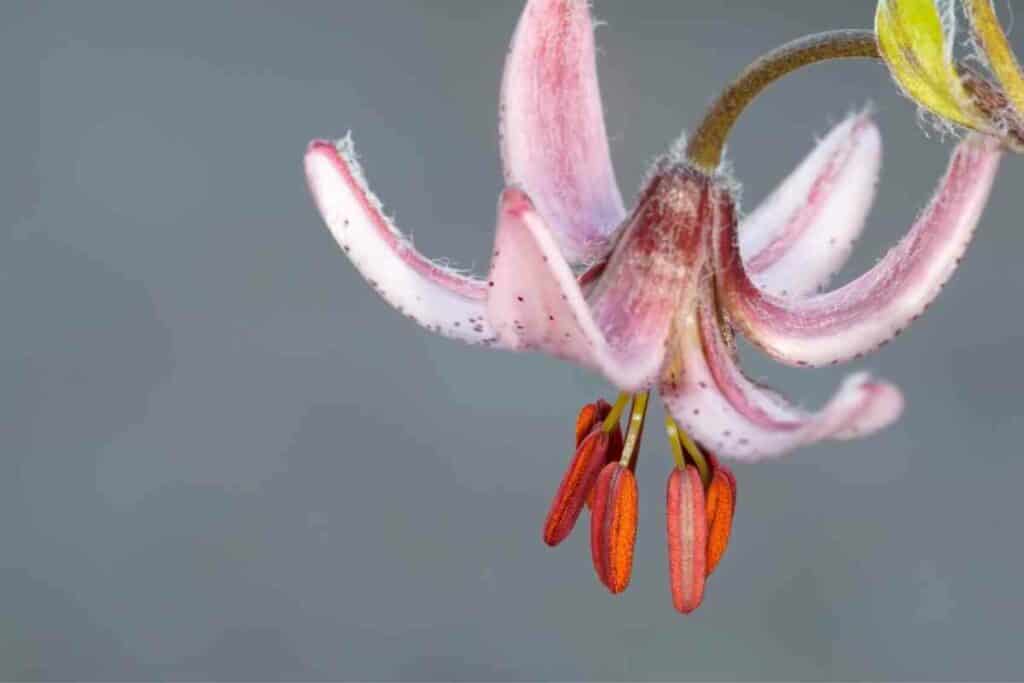
Are there other flowers native to Japan?
Japan has grown and continues to produce hundreds of flowers. Although some may not be native to the country, they have been around for a long time and are considered part of the Japanese flower culture.
They include:
- Hasu. It is a beautiful Japanese Lotus Flower that floats on water and represents light and purity.
- Nemophila. Commonly known as Baby Blues, these flowers bloom in spring. Visitors flock to the parks where they grow in Japan to catch a glimpse as they symbolize natural plant beauty.
- Shibizakura is creeping phlox Flowers native to Motosuko Lake along Mount Fuji. These purple and pink flowers bloom, turning the whole valley beautifully bright.
- Suitopi are sweet pea flowers that formpart of flower arrangements and mean farewell. They bloom from the sweet pea plant, which grows in Japan. Additionally, they smell nice and are an excellent addition to goodbye flowers for someone leaving.
Conclusion
Picking flowers in season is a form of Ikebana as one celebrates the blooms.
Besides the traditional floral arrangements, there are other ways to show the flower love language.
Traditional garments like Kimonos have drawings of flowers to illustrate Hanakotoba.
Different Kimonos are worn according to age, type of celebration, and the season, representing Hanakotoba in various settings.
Furthermore, the hair arrangement style known as Kanzashi represents the language of flowers.
Traditional hair ornaments with drawings of the flowers in season are arranged as hair pins to pass a message.
Finally, when attending a formal event in Japan, like weddings, one must be careful to pick the right flowers. Choosing the incorrect bouquet can be disrespectful or convey a wrong message.
- 7 Best Japanese Sunscreen Products You Can Buy Online
- 5 Best Japanese Makeup Brushes for a Flawless Finish
- 7 Benefits Of Tatami Mats You Should Know
- The Best Furoshiki Wrapping Cloths: Inspiration, Ideas & Cloths You Can Buy
- Cool Tenugui Towels (10 Best Ones with Bold Japanese designs)
- Japanese Yukata Ideas & Inspiration (20 Creative Ideas)




